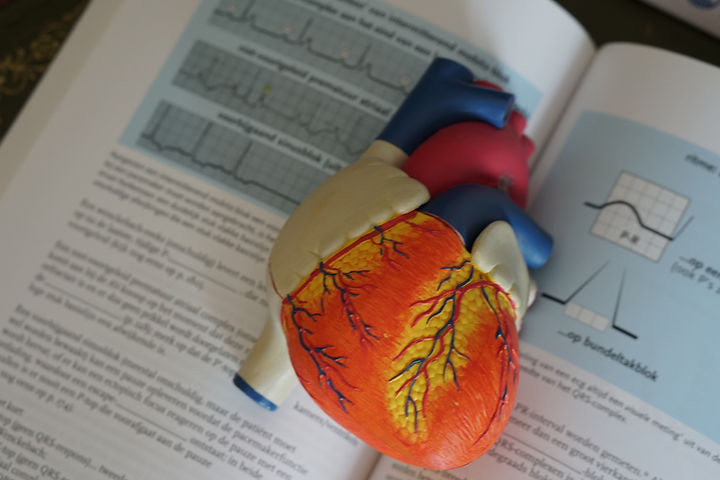
CARDIOVASCULAR EXERCISE
BENEFITS OF AEROBIC EXERCISE
Reduction of fitness after SCI is attributed to various factors including inactivity imposed by diminished active muscle contraction, the need for special equipment and assistance performing exercise, physical and financial barriers, pain, and injury. Benefits of cardiovascular exercises include
Improves energy levels
Improves mood
Improves sleep
Decreases pain
Helps achieve and maintain a healthy weight
Improves cholesterol and blood sugar
Decreases the risk of heart disease
CARDIO GUIDELINES
Individuals with SCI should participate in at least 150 minutes of moderate aerobic exercise per week. Ideally, these minutes can be broken down into 3-5days/week of 20-60 mins per workout. While performing aerobic exercises, aim for a moderate to vigorous level of intensity. This range is usually determined by 50-80% of an individuals peak heart rate, but an even easier method is the “talk test.” When exercising, being able to talk but not be able to sing would indicate a moderate intensity level. If you were only able to say a few words, this would indicate a vigorous intensity level. If you find yourself belting out lyrics to your favorite artist, you need to pick up the intensity!
TYPES OF AEROBIC EXERCISE
Wheelchair “sprints”
Upper body ergometer/arm bike
Rowing
Swimming
Circuit training
Many more!
Warm up: 5 - 10 minutes
Workout: 20 - 30 minutes
Cool down: 5-10 minutes
Video Author: Gaylord Physical Therapy Orthopedics and Sports Medicine
MOBILITY

BENEFITS
After an SCI, individuals have to find alternative methods of completing activities. Certain muscles will be relied on to complete these tasks, which can produce discomfort if not addressed. Benefits of stretching include:
Improved mood
Reduced spasticity
Improved posture
Increased independence
Improved circulation
GUIDELINES
Able to perform daily
Stretches should be gentle, slow, and pain-free
Hold for periods of 30-60 seconds
Important to focus on areas of need for patient
Include lower extremity stretching
Avoid overstretching these areas with possible impaired sensation
COMMON MUSCLE GROUPS TO FOCUS
Common areas of tightness after a SCI include the shoulders, hips, knees, and ankles
Chest, shoulders, and biceps are essential muscles used for mobility and may frequently tighten
Precautions (Please Read)
Stretching is important and good to do on a daily basis, however going past your bodies limitations could result in injury. If you have lack of sensation in the muscle group you are stretching do not feel like you need to go to end range. Additionally, when you stretch your muscle it will decrease the stiffness of your tendons. There are certain tendons that are more functional for activities of daily living when they have some "stiffness" to them (i.e. your back extensors to sit up and wrist flexors for gripping objects). You should also consider what position for stretching may or may not be appropriate for you.
NECK STRETCHES



NECK EXTENSORS
NECK FLEXORS
LATERAL FLEXORS


NECK ROTATORS
ROTATION W/ TOWEL
SHOULDER STRETCHES



FLEXION
EXTENSION
ADDUCTION



INTERNAL ROTATION (ARM BEHIND BACK)
EXTERNAL ROTATION (ARM BEHIND BACK)
ARM AT 90 DEGREES. BRING FOREARM TOWARDS UPWARD AND THEN DOWNWARD.
CHEST STRETCHES


Alter how your high arm is raised to target different portions of your chest and place the forearm so that it is resting on the doorframe. Other option is to lie on your back in bed and let your arm hang off the edge. Purpose: opening up the
It can help when you are able to visualize the muscles you are stretching!
WRIST & FOREARM STETCHES



ROTATERS
FLEXOR STRETCH
EXTENSOR STRETCH
HIP & BACK STRETCHES
***Important to NOT hyperextend (bend backward too far)***
Other stretches not show: external & internal rotation



HIP FLEXOR STRETCH
GLUTE/ HIP EXTENSOR STRETCH. CAN DO SINGLE KNEE OR DOUBLE KNEES TO CHEST.
HAMSTRING STRETCH. MODIFCATION: LIE ON BACK AND USE TOWEL TO RAISE LEG INTO AIR.
KNEE & ANKLE STRETCHES
Stretches not shown: knee flexion (bending knee) and ankle inversion/eversion (side to side movement).


DORSIFLEXION: USE TOWEL WRAPED AROUND FOOT TO BRING FOREFOOT/TOES BACKWARD.
HAMSTRING (KNEE EXTENSION) STRETCH
Images taken by Jarrett Michaels
RESOURCES
Clinical Practice Guidelines: Spinal Cord Medicine. Paralyzed Veterans of America. https://pva.org/research-resources/consortium-for-scm/. Published 2018. Retrieved September 06, 2020.
Exercise after Spinal Cord Injury. (2016). Model Systems Knowledge Translation Center. https://msktc.org/sci/factsheets/exercise. Updated 2016. Accessed September 9, 2015.
Martin Ginis KA, van der Scheer JW, Latimer-Cheung AE, et al. Evidence-based scientific exercise guidelines for adults with spinal cord injury: an update and a new guideline. Spinal Cord. 2018;56(4):308-321. doi:10.1038/s41393-017-0017-3
Sasso E, Backus D. Home-based circuit resistance training to overcome barriers to exercise for people with spinal cord injury: a case study. Journal of Neurologic Physical Therapy. 2013;37(2):65-71. doi:10.1097/NPT.0b013e31829247a9